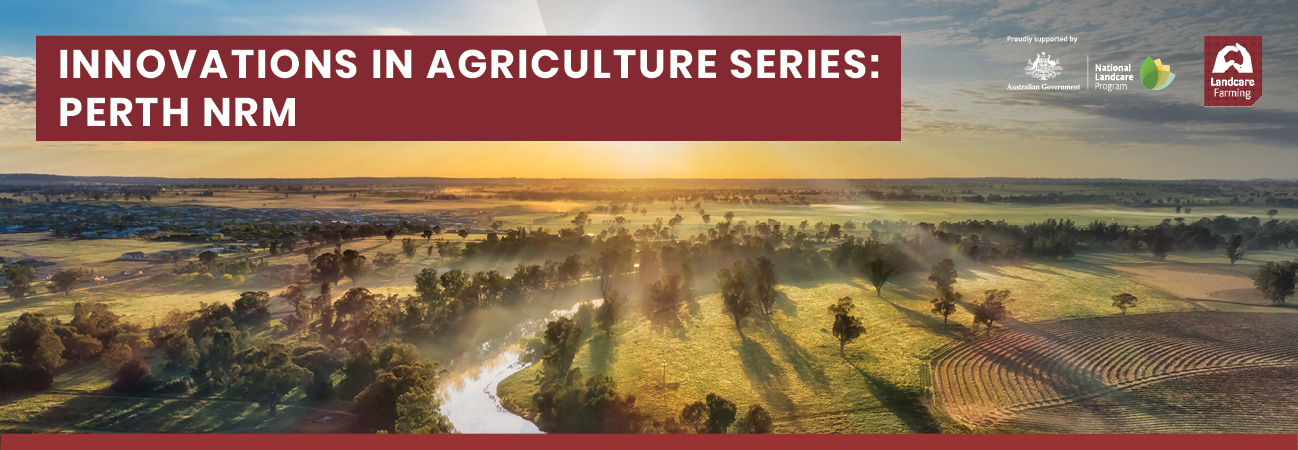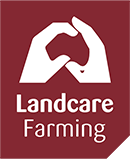
Transition to low input farming for productivity and biodiversity gains
New Western Australian farmers Sarah and Geoff Mason have made a swift transition to low input farming, with the goal of creating a profitable, full-time farm enterprise through productivity and biodiversity gains.
Sarah’s mother purchased the 600-hectare ‘Carrah’ just outside Calingiri in WA in 2001, with Geoff and Sarah moving on to the property in 2008. While the couple has always managed the extensive revegetation works on the property, the 320-hectares of arable land was predominantly leased for production (including sheep grazing and canola) until the Masons regained full control in 2021.
Immediately they transitioned farming practices to following regenerative principles, focusing on improving soils, groundcover and biodiversity.
“Regenerative agriculture means to me that we’re improving the land through our agricultural practices. So our end goal is to leave this place in a better condition than it was when we took it over,” said Sarah.
The Masons decided to stop using all synthetic fertilisers and pesticides on their paddocks to support their soils to return to a more native state. To increase available feed in their beef cattle grazing enterprise they conducted a shallow plough over their paddocks (previously filled with wild radish up to 80cm high), and spread oats during a fallow season with the aim of using up residual nitrates and stimulating soil biology. They then created their own compost tea (a liquid produced by extracting bacteria, fungi, protozoa and nematodes from compost), and sprayed it across the paddocks before pasture seeding with groundcover including Safflower (Carthamus tinctorius), Buckwheat (Fagopyrum esculentum), and Yarck Cocksfoot (Dactylis sp.) in 2022.
“The soil doesn’t heal itself,” said Sarah. “It actually requires a bit of management to help those processes start again.”
At the same time, Sarah and Geoff looked to improve groundcover by growing indigenous native plants including Saltbush (Atriplex sp.), Bluebush (Maireana brevigolia), Western Australian Golden Wattle (Acacia saligna), Rhagodia presissii, and Enchylaena tomentosa. Sarah has also been undertaking hand seeding of Windmill Grass (Chloris truncata), Kangaroo grass (Themeda triandra), Foxtail Mulga Grass (Neurachne alopecuroidea), and Spear Grass (Austrostipa spp.) that she has gathered from across the property, with many plants beginning to self-propagate.
While the Mason’s farm transition phase is currently supported by Geoff working off-farm, with all farm income being used for restoration and infrastructure works, they have begun to run heifers on their property, with the goal of increasing their stocking rate in future to improve herd impact on their pastures.
Sarah uses a grazing chart to undertake what she calls “adaptive management grazing”, a form of rotational grazing managed around climactic events. Supported by the increased rainfall during the past few years, this grazing method has allowed for their newly seeded pasture to establish and become more productive, and has encouraged pollinators including native Blue Banded Bees to return to the property by providing adequate habitat.
The Masons have been managing their grazing since 2021, resulting in increased groundcover and an average weight gain of approximately half a kilo a day in their heifers over that time.
In addition to their pasture and soil restoration works, the Masons have been protecting remnant patches of vegetation and revegetating the property since 2001. Together with family and friends, they have planted approximately 150,000 seedlings of predominantly locally-indigenous trees and shrubs including Hakeas (Eucalypts., and Scarlet Bottlebrush (Callistemon phoeniceus), aiming to prevent the spread of salinity and stop soil erosion.
Sarah has noted that since the tree planting began, and with a recent increase in rainfall, they have seen a change in the water quality in the Benedictine dam and well.
“When the property was purchased in 2001 the water was so salty it was rusting the stainless-steel pots and we had to install rainwater tanks for drinking and house use instead,” said Sarah. “Now when we taste tested the water last summer it was fresh, and a recent salinity test has told us that the salinity level is 350 mg/L which is regarded as good quality drinking water!”
50km of fencing has also been constructed to protect the revegetated areas from stock access, and the couple have recently been working on connecting the remaining islands of vegetation to allow small animals and birdlife to move across the landscape. This is especially important as Carrah is home to a number of endangered Carnaby’s Black Cockatoos, and the Masons have engaged in targeted plantings of Carnaby’s food species, as well as installed various artificial hollows on the property to help preserve the local population.
Sarah and Geoff’s revegetation works have supported an increase in birdlife including Wedge-tailed Eagles, Nankeen Kestrels, and Spotted Harriers, as well as the return of bat species, including Gould’s Wattle Bat, which have not been seen on the property since 2015.
The Mason’s now aim to continue their pasture and soil restoration works, while increasing the biodiversity and productivity of their farm.
“There are plenty of challenges of what you do on a day-to-day basis, but having that end goal or vision is really important,” said Geoff. “A lot of it is about attitude. If you believe you can you will, and if you believe you can’t you won’t.”
This case study was produced as part of the Landcare Farming Innovations in Agriculture Series. Supported by the Australian Government’s National Landcare Program, the Landcare Farming Innovations in Agriculture Series is managed in partnership by Landcare Australia and the National Landcare Network.
Explore the following resources to find out more about managing similar environments:



